On Wednesday 9 October 1968, a play was shown on BBC Television called The Lower Largo Sequence. The photograph above from 'Scotland on Air' shows the principal actors, Isobel Black and Patrick Allen, standing on Largo Pier with the Keil Burn and the houses of Drummochy in the background on a misty day. The play was described as "the wry story of the love between an ageing man played by Patrick Allen and a young girl Isobel Black. The man is tormented by the age gap, a torment which leads to turmoil in the relationship" The Stage (26 September 1968) . The fuller synopsis was as follows:
"The verse continues but the rumour finds its confirmation on the stones of Lower Largo on the east coast of Scotland, where the statue of Alexander Selkirk looks out over his birthplace. Defoe was there first to fictionalise him in Robinson Crusoe; the original sailor has been dead for more than two-and-a-half centuries, but the Crusoe-syndrome remains.
In The Lower Largo Sequence the central character is The Man, the island seeker. Which island? Any island. The island he has created within himself and which The Girl invades."
The script was written by Eddie Boyd. He had made an earlier visit to Lower Largo to do some writing, which resulted in a series of poems, which he named The Lower Largo Sequence. Some months later, he went back to work on them further and the result was a script. This was subsequently filmed and soon afterwards was screened on the BBC as a 'Wednesday Play'. Filming took place on location in Lower Largo in May 1968. If you recall the TV cameras rolling into the village for filming, please comment. The key cast members were:
- The Commercial Gent: Callum Mill
- Railway Official: David Kinnaird
- The Man: Patrick Allen
- The Girl: Isobel Black
- Conductress: Nancy Mitchell
- Landlord: Harry Walker
- The Lover: Michael Harrigan
- Traffic Warden: Ken Henderson
The headline above appeared in the East Fife Mail the week after the play was screened (16 October 1968). Villagers were allegedly "up in arms" over how village life was portrayed. In addition to this article, the same paper published three letters of complaint about the show in its 'mailbag' feature. Remarks included that the play was "sleazy" and "a confused, distasteful and vulgar bit of third-rate drama" whose key ingredients were "drink, sex and violence". It was felt that it could have been set anywhere but had been "foisted upon" Lower Largo due to an obscure link to Alexander Selkirk and the quest for solitude.
As the presence of film crews and well-known actors in the village had caused so much interest, many families had allowed their children to stay up late to watch the play. Once the nature of the subject matter became clear, some took exception. A petition was promptly started to protest to the BBC. Soon eighty residents had signed it. In addition, the St Andrews District Council were called upon to act and they subsequently wrote a letter of complaint to the BBC. A later reply to them stated that the play had been praised by critics and that the sequences filmed in Lower Largo showed the village as it was. At least one resident agreed with the BBC, stating that "the locale was well-illustrated and the camera work was outstanding. The shots were well composed, particularly the night scenes".
Below is the full TV schedule for the day that the play was screened. The Lower Largo Sequence was shown between a party political broadcast and the Horse of the Year Show. It would be interesting to re-watch the play today but it seems that it is no longer part of the BBC's archive.


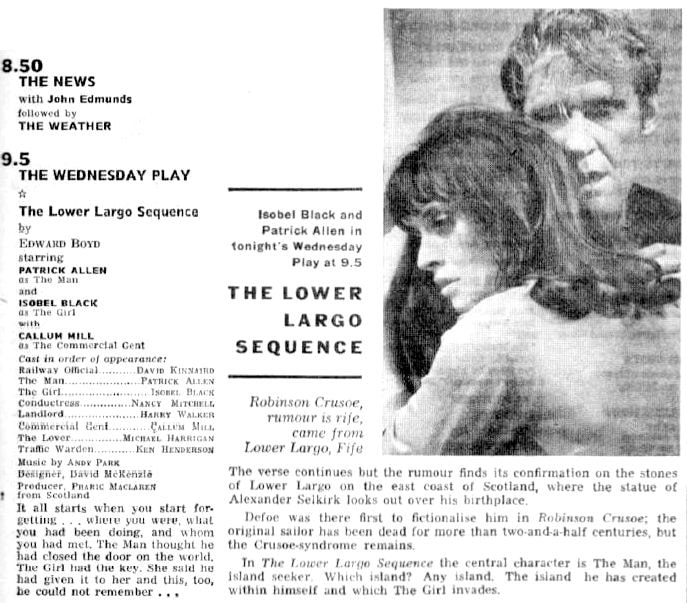

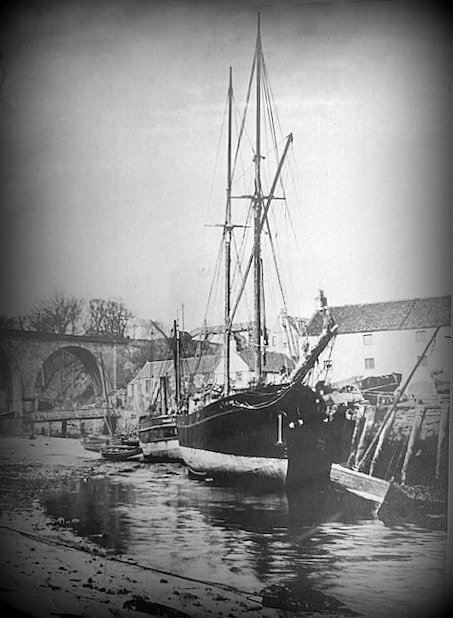





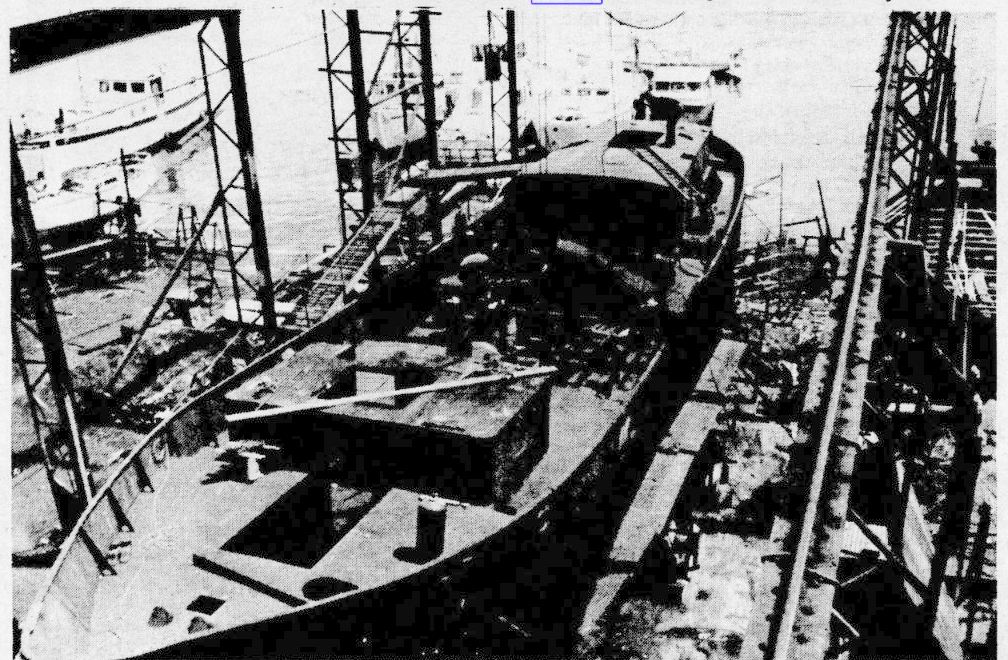

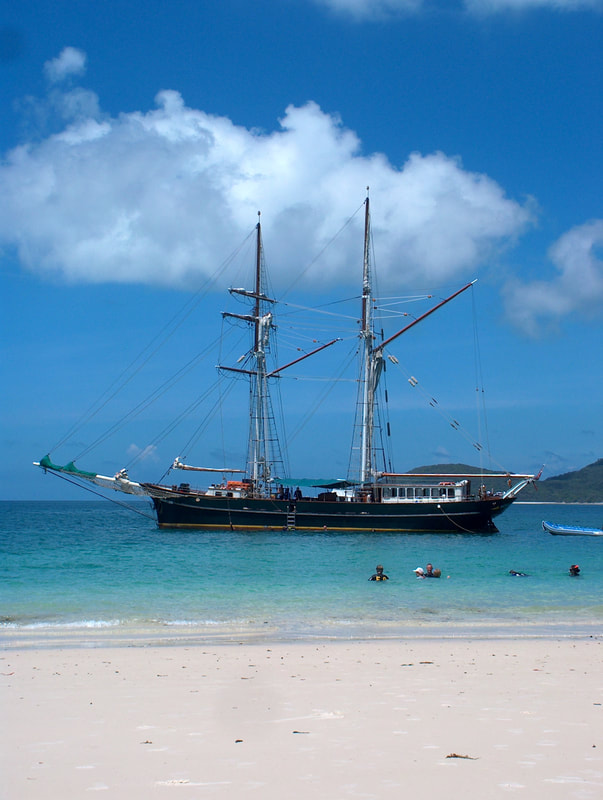

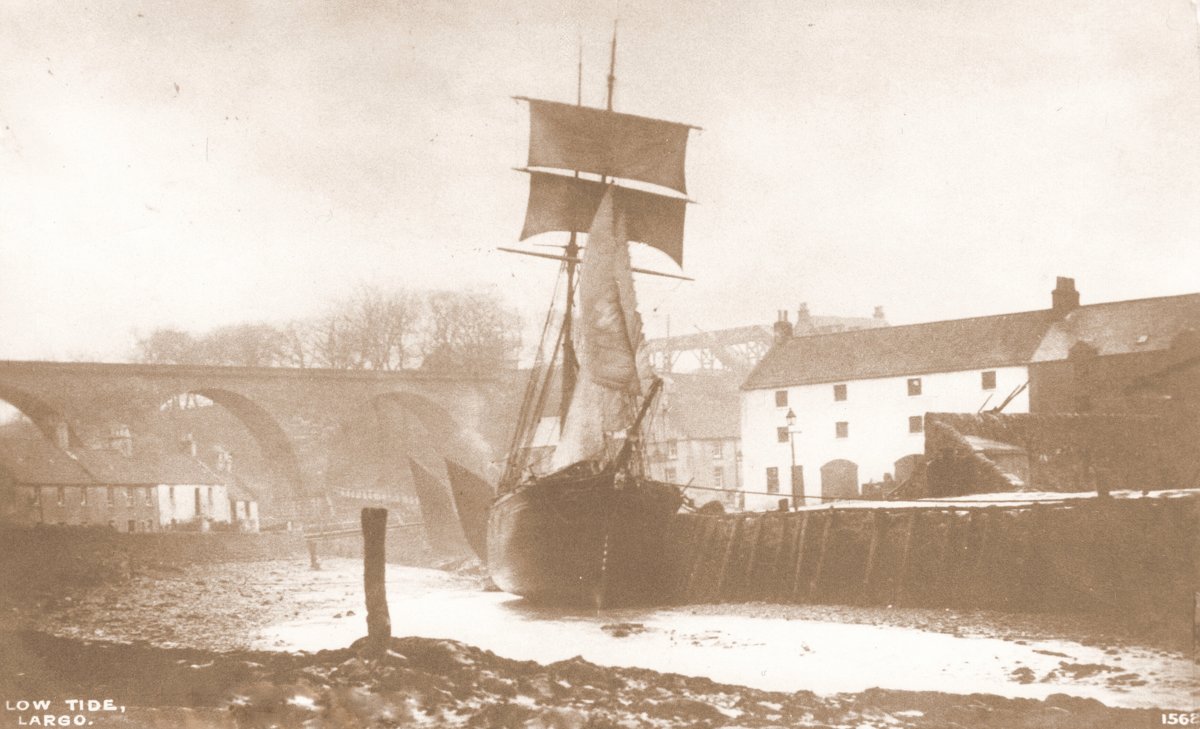









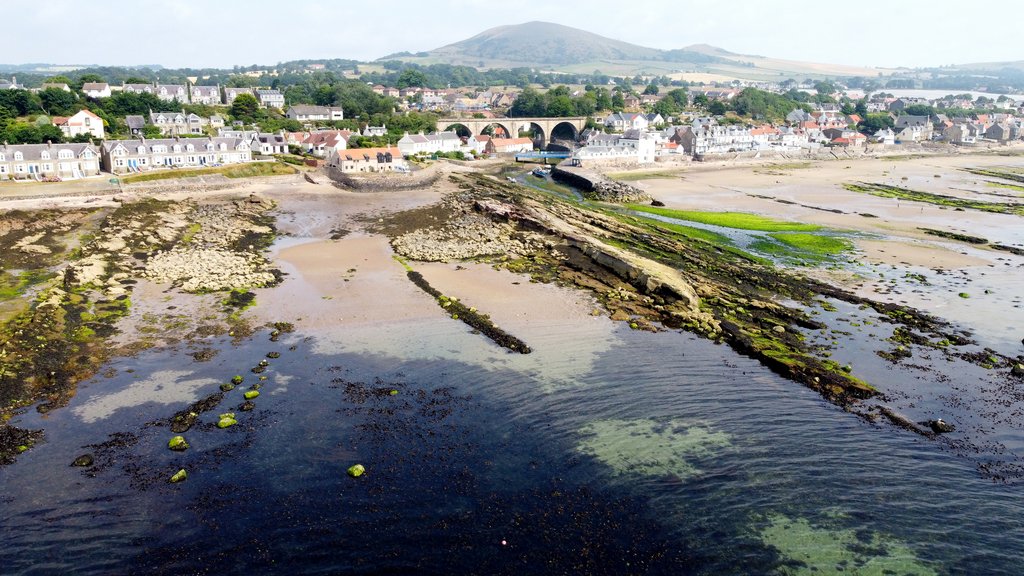

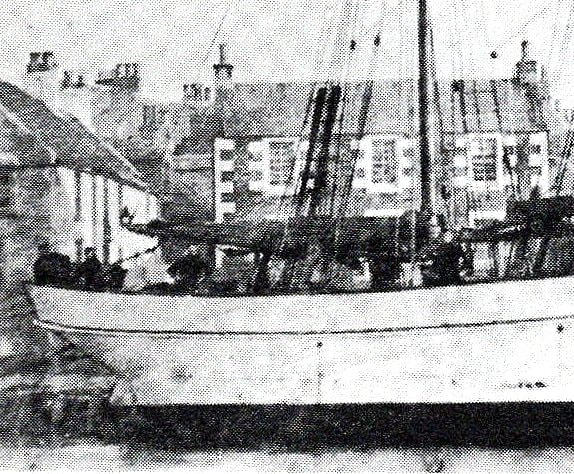
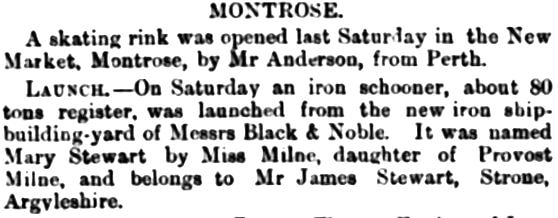

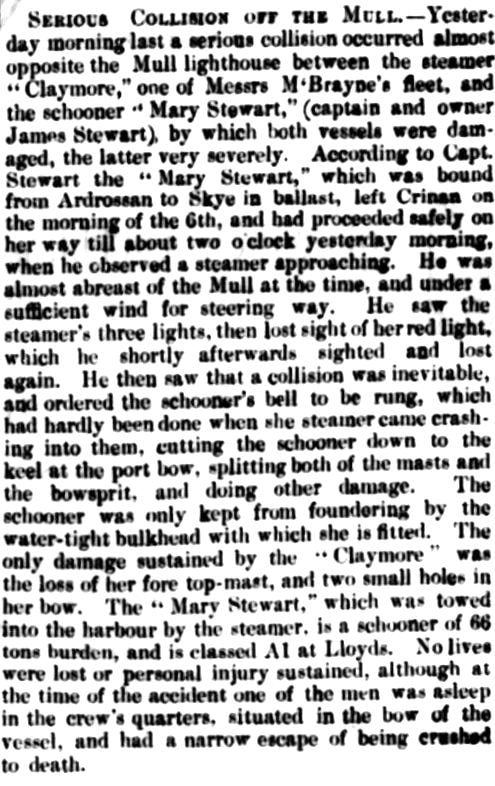




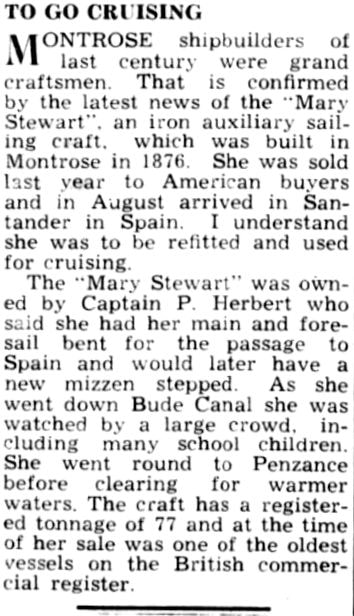
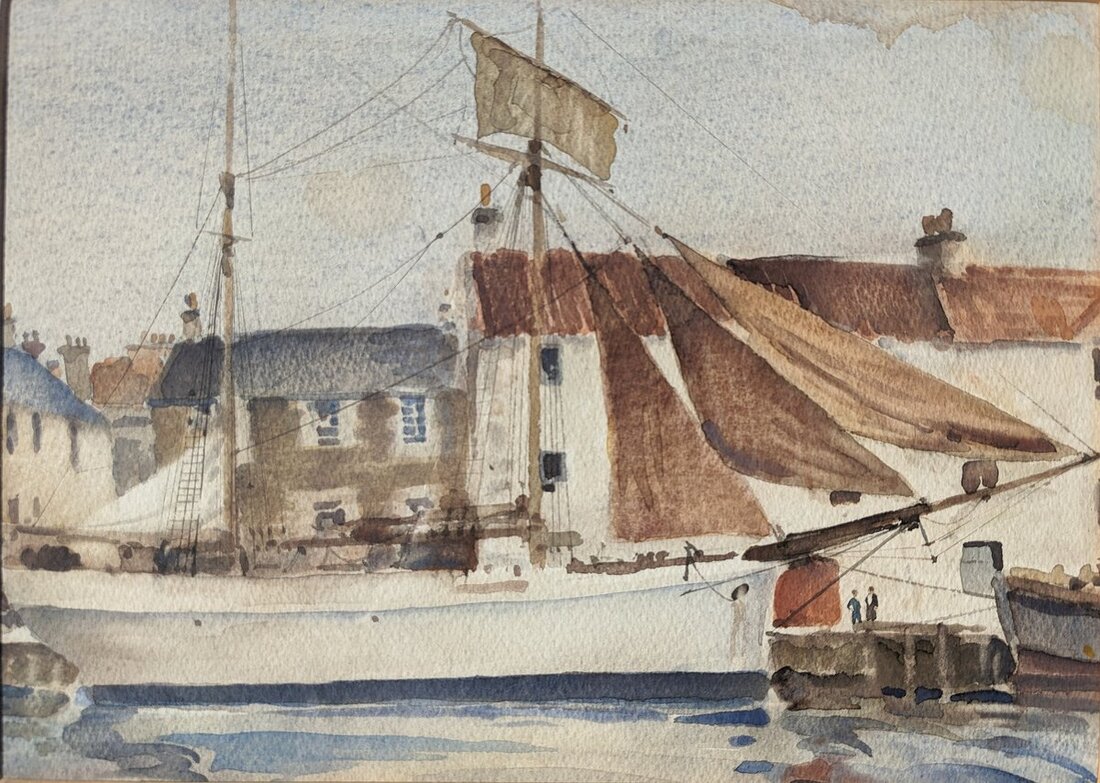


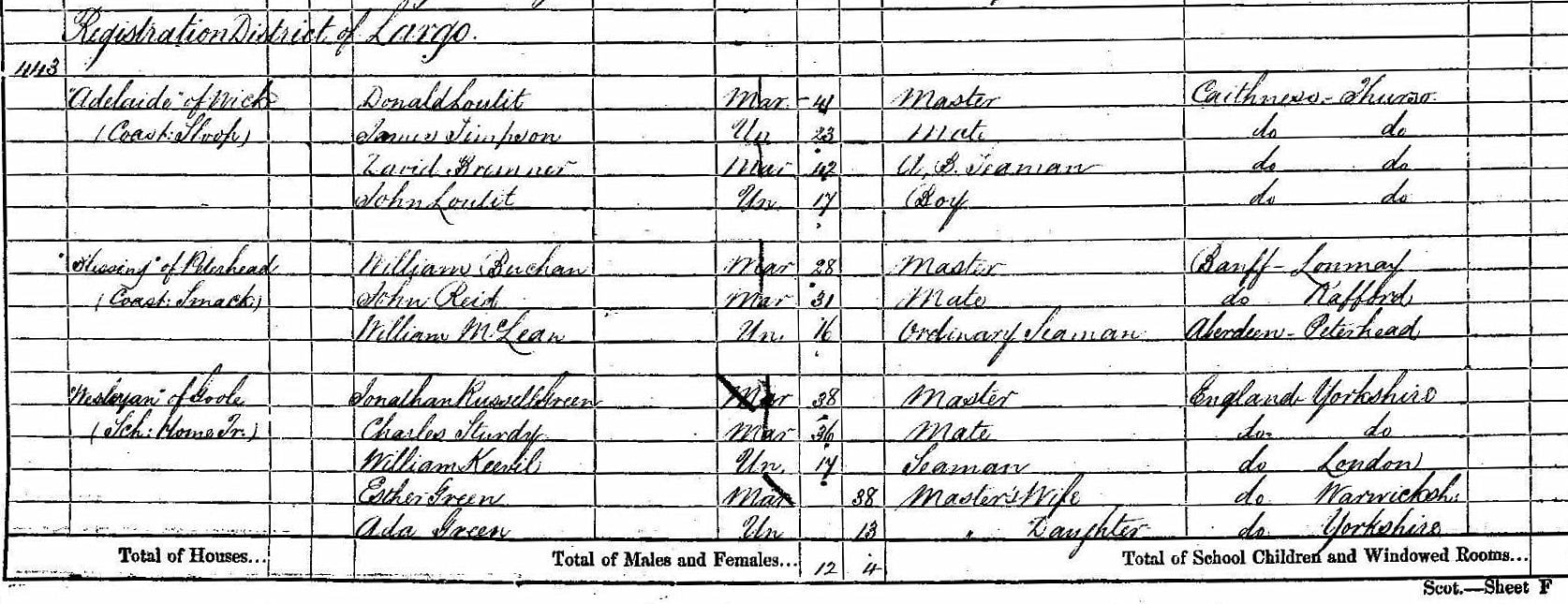

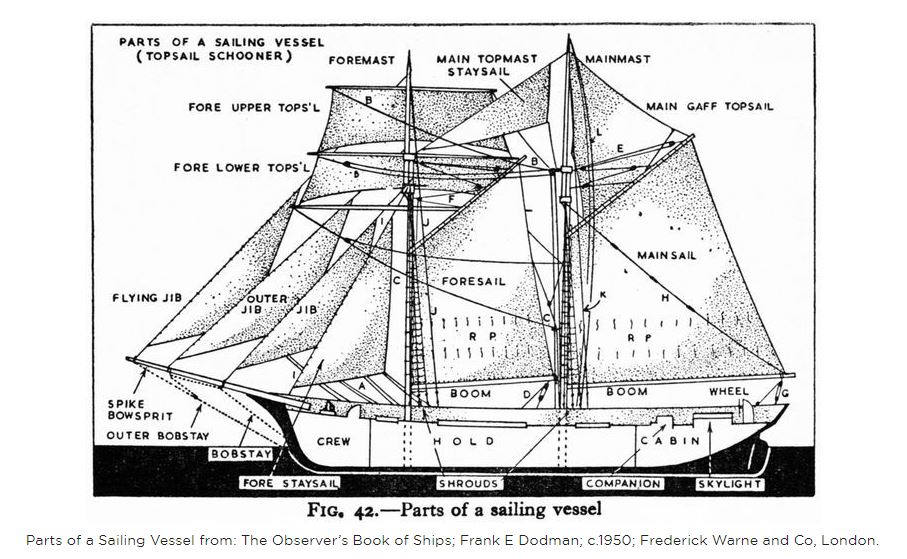

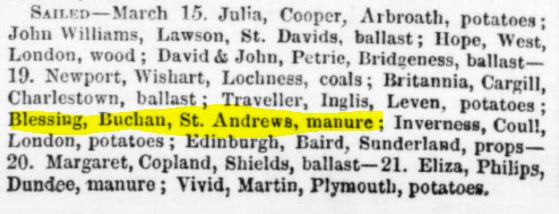




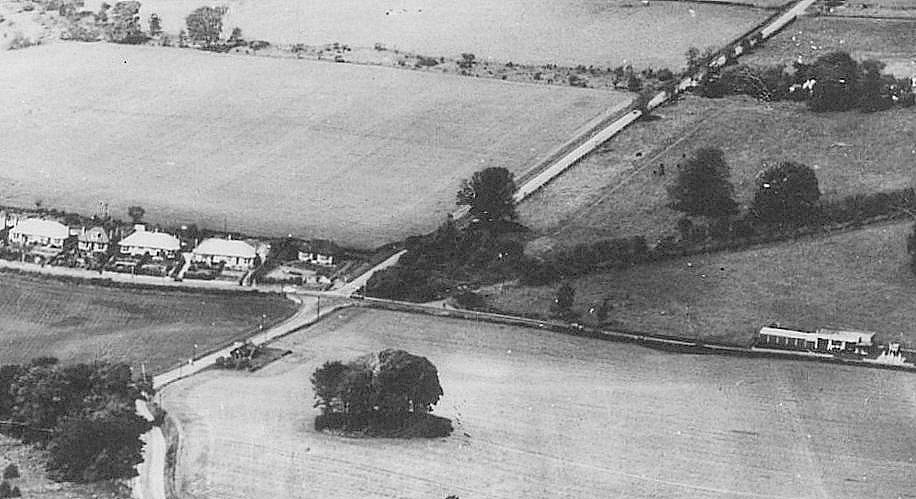
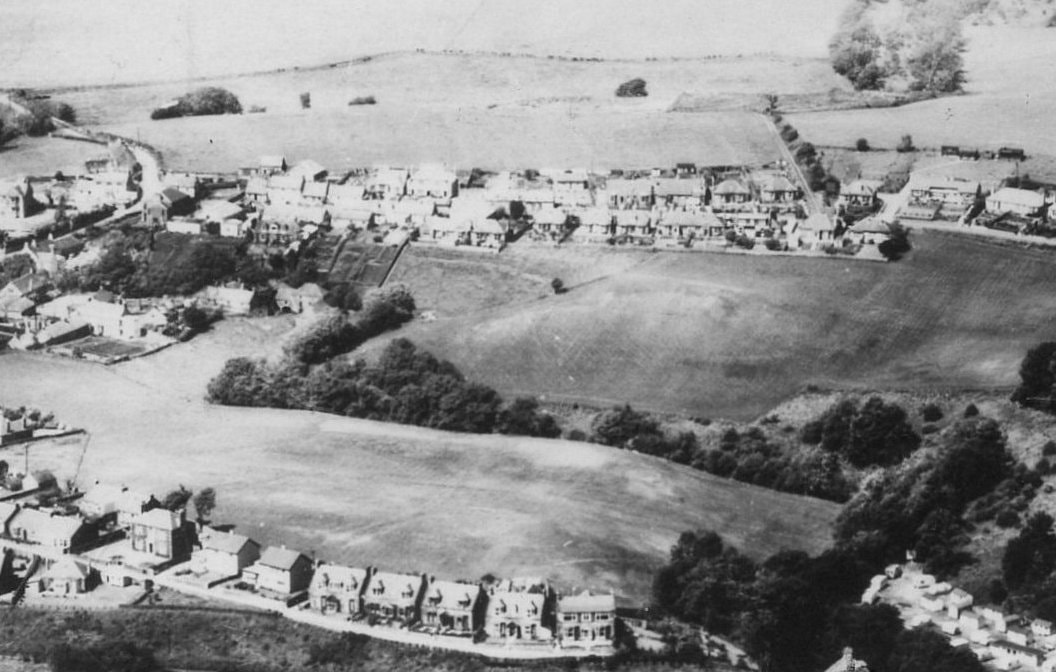

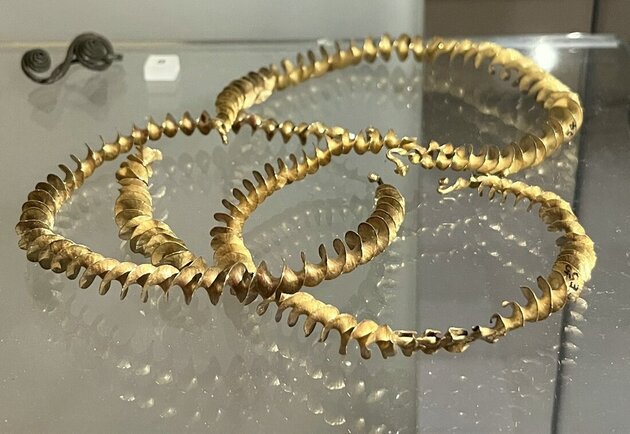
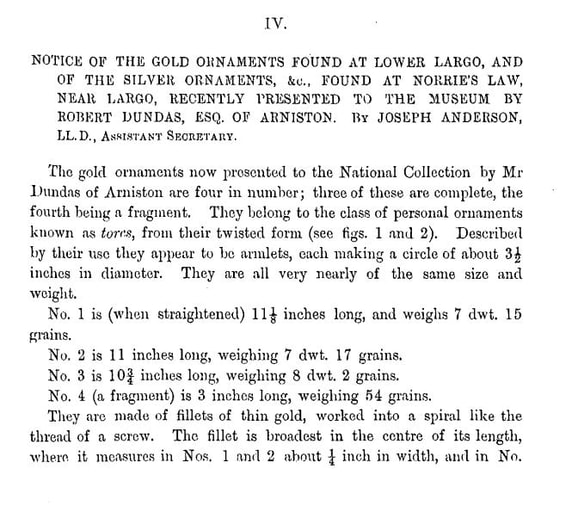

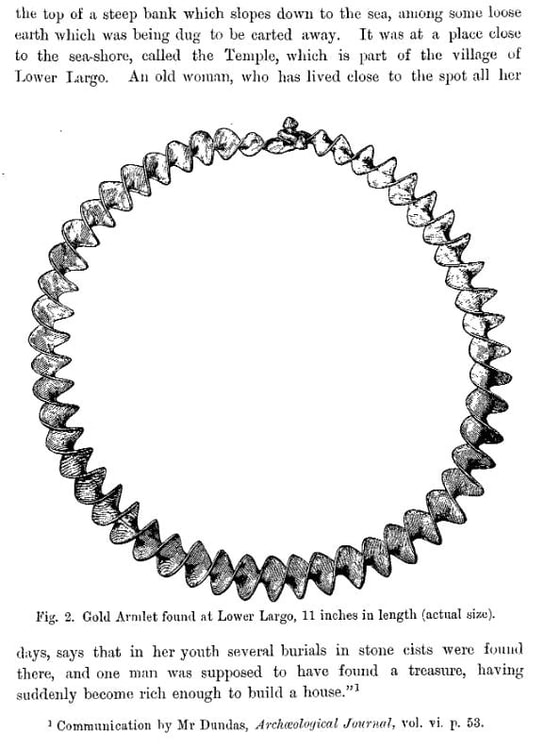
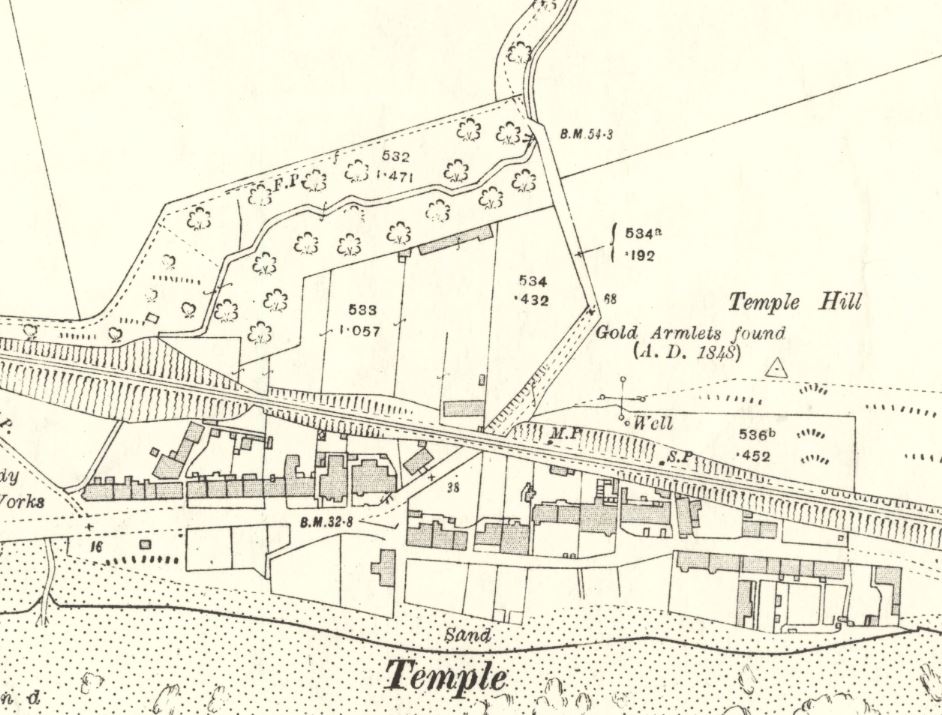

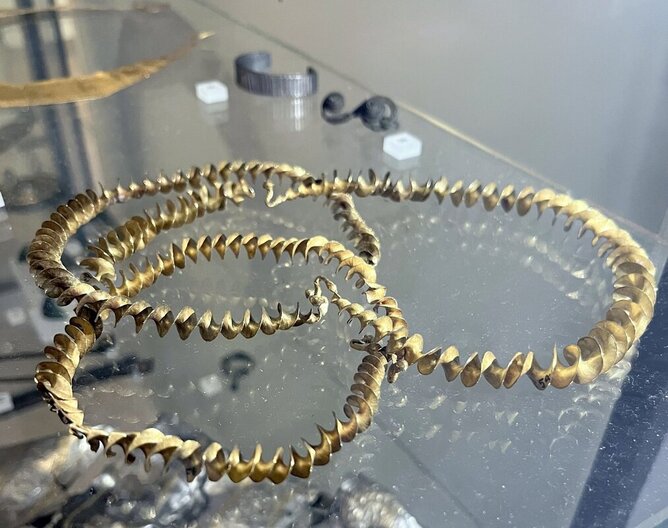
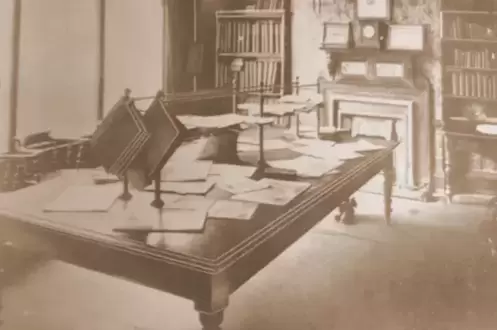


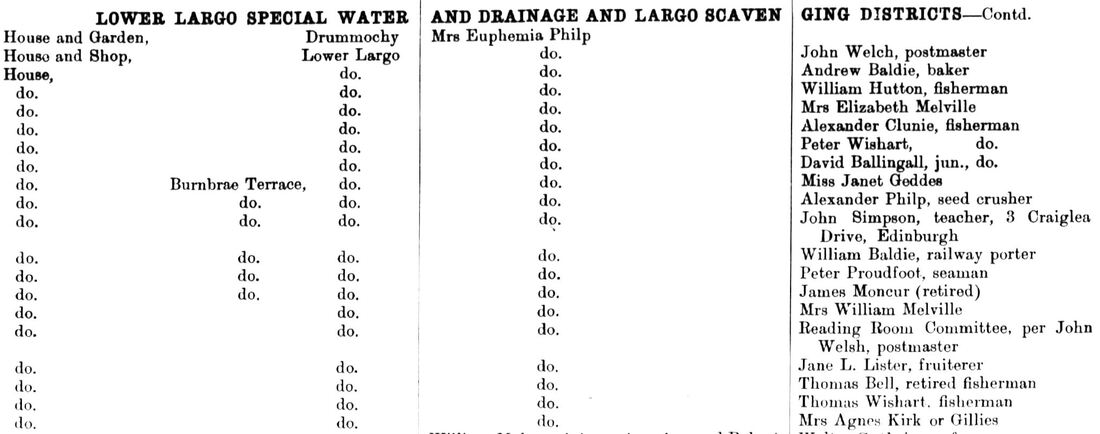
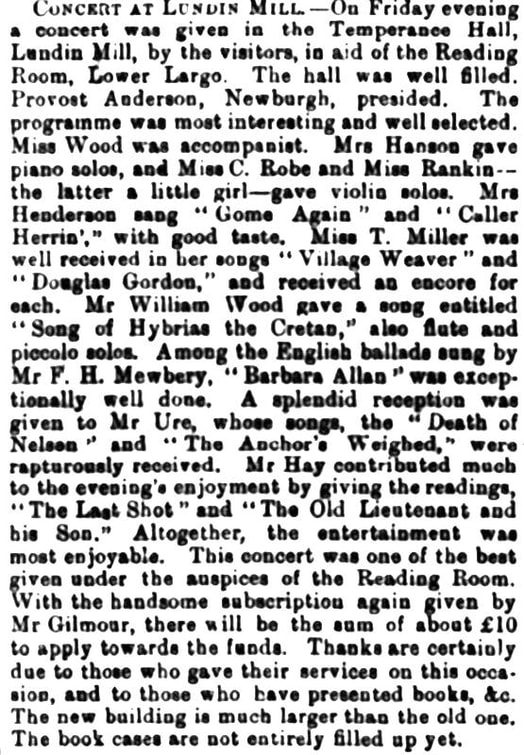
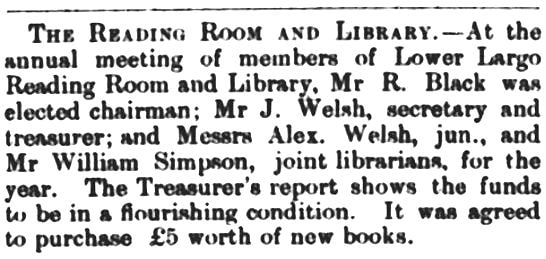
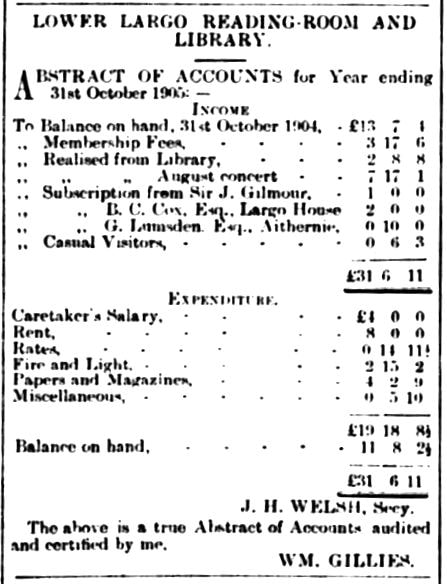
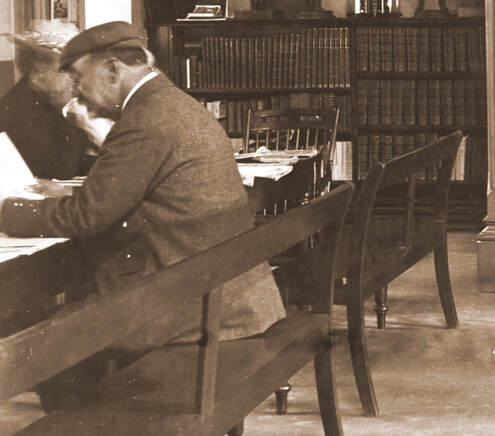
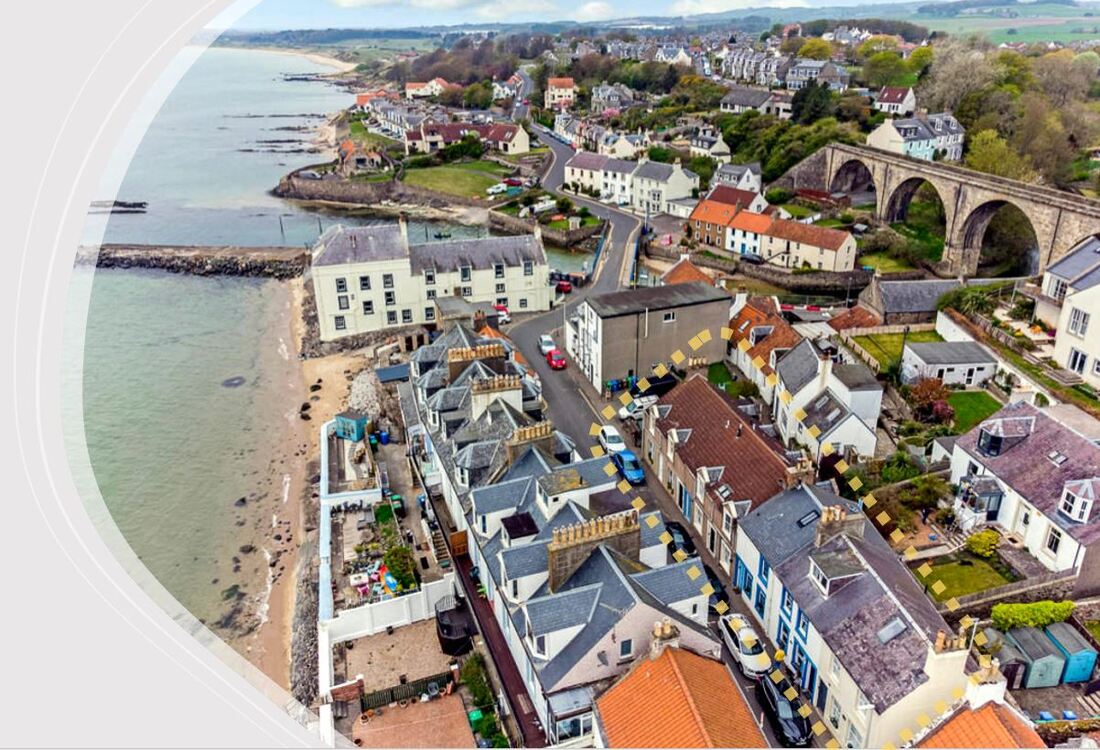
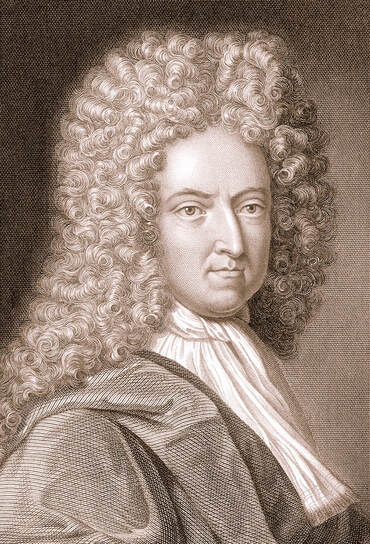

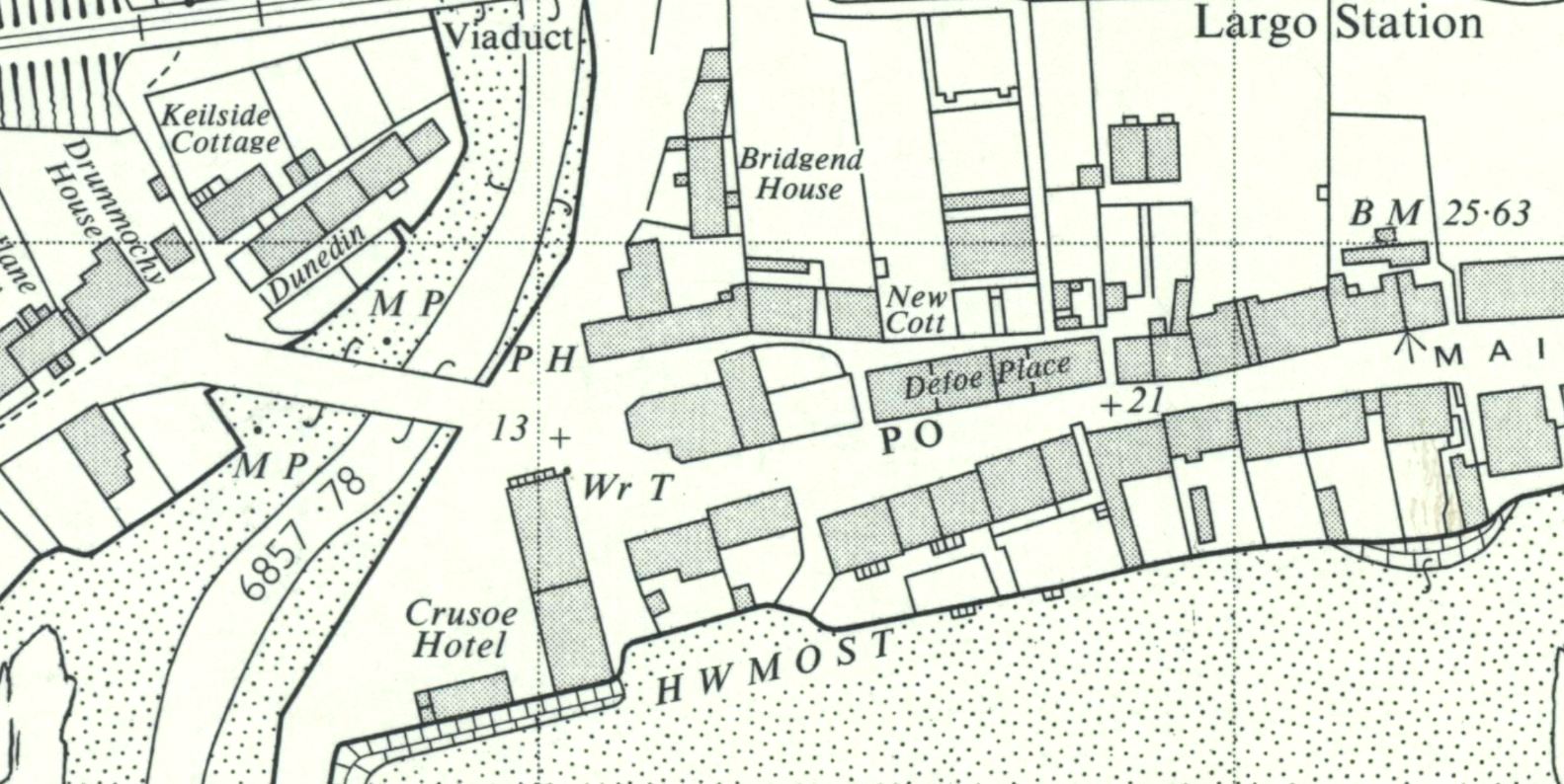
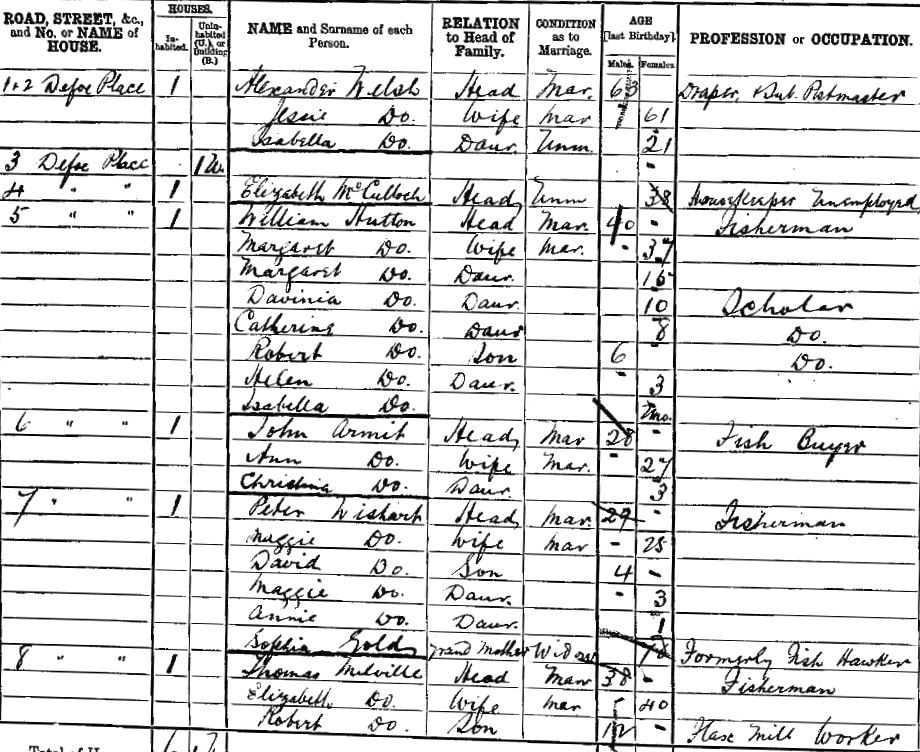


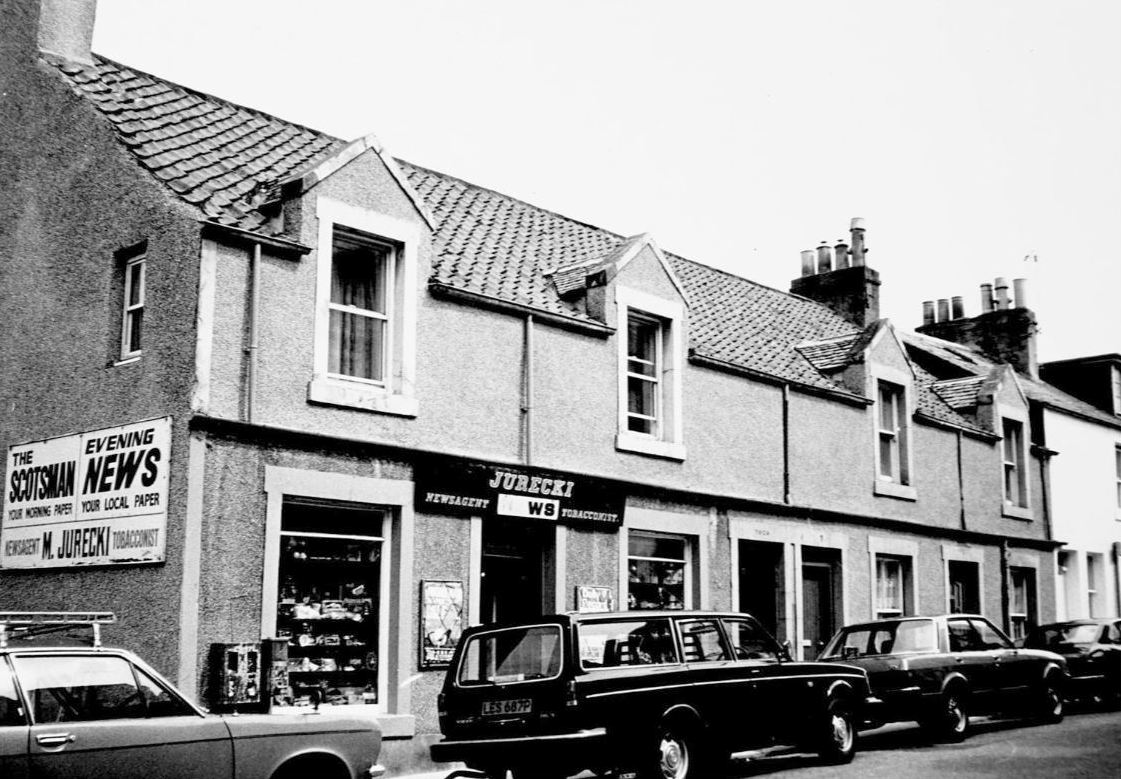
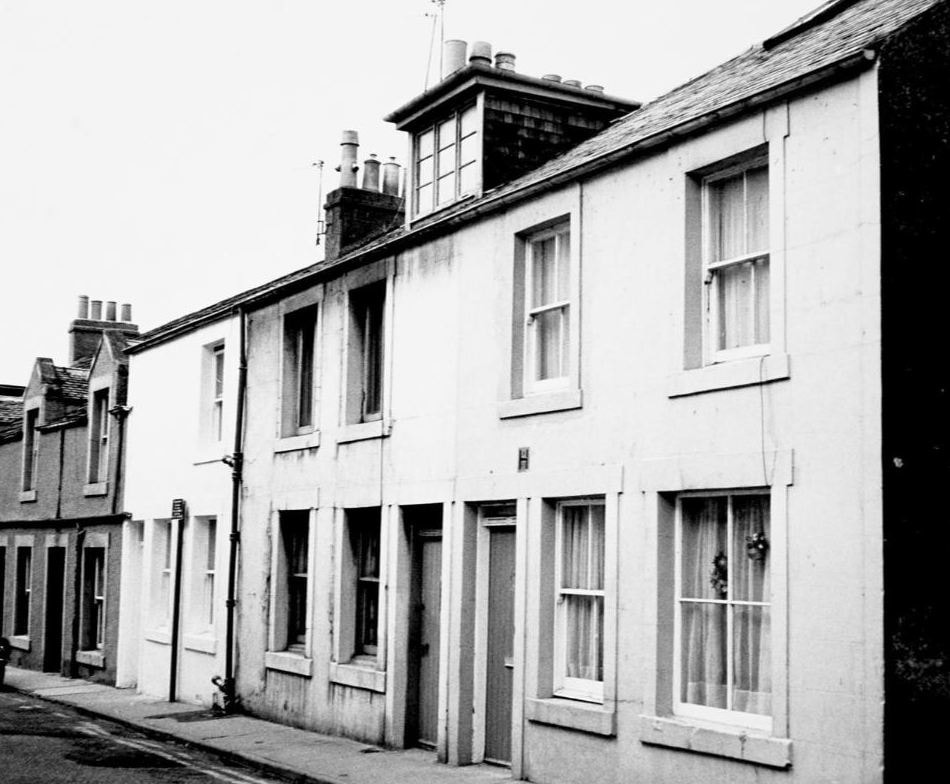

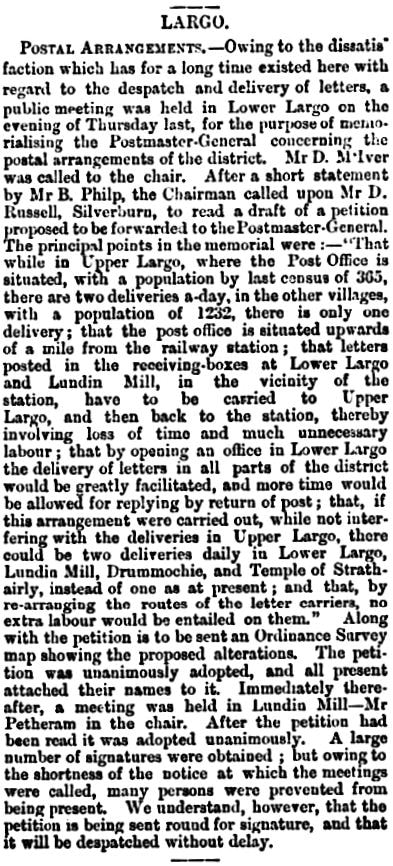
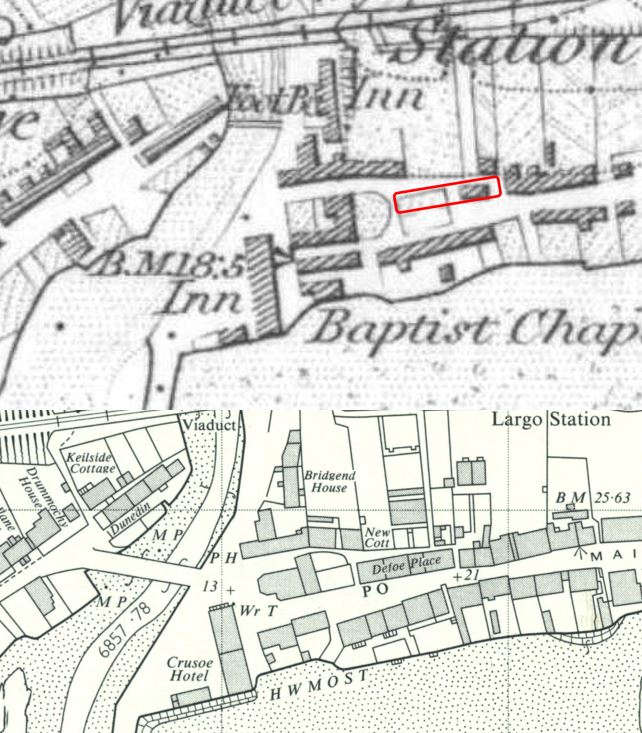

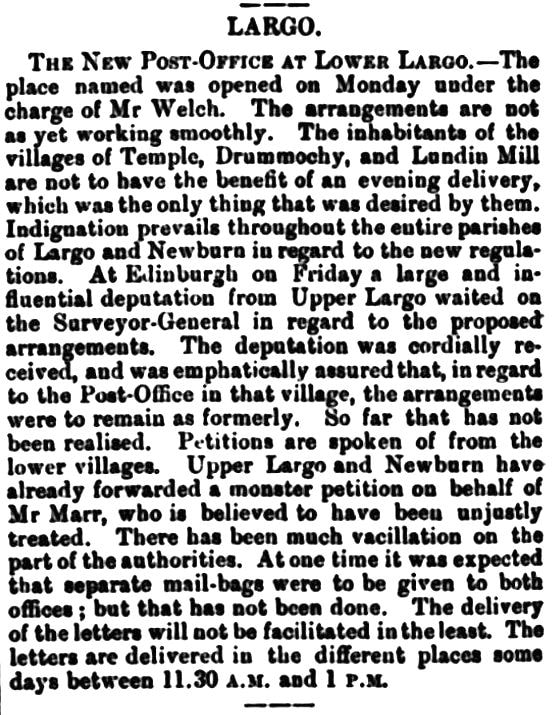
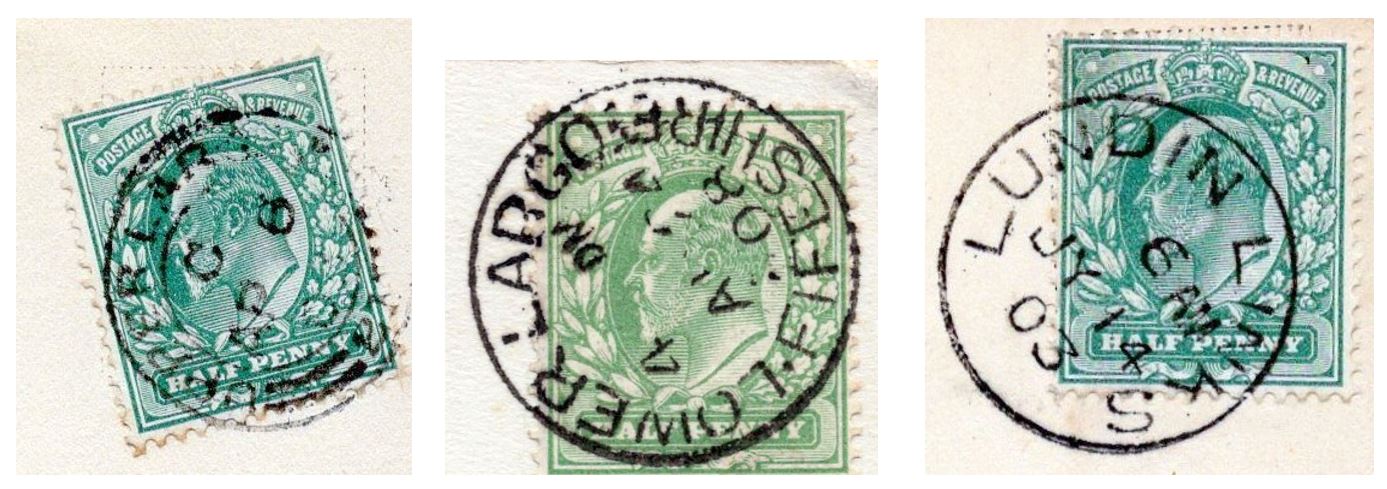
 RSS Feed
RSS Feed
